sOUTH AMERICA
15 min read
Thinking about living in Ecuador? The volcanoes, vibrant culture, and low cost of living attract both families and future retirees looking for more value—and more peace. But it’s not all smooth sailing. Here’s what you need to know before deciding if Ecuador is the right fit for your next chapter.
……………………………..
Are you considering living in Ecuador?
It’s a country that offers plenty to love, but like anywhere, there are living in Ecuador pros and cons you need to weigh before making the move.
On the plus side, Ecuador stands out for its breathtaking natural scenery, low cost of living, simple residency process, and rich cultural experiences. These factors often top the list when people evaluate living in Ecuador pros and cons.
However, some challenges exist—like patchy infrastructure and occasional service limitations—which can impact daily life depending on where you settle.
Remember, the living in Ecuador pros and cons will differ for everyone based on individual priorities and lifestyle.
In this article, we’ll explore the essential living in Ecuador pros and cons so you can make an informed decision about whether this South American gem is your ideal new home.
Table of Contents
Living in Ecuador: 9 pros
Ecuador is a beautiful country with plenty to offer ex-pats and entrepreneurs alike. From the stunning coastline to the majestic Andes mountains, there are plenty of reasons to call Ecuador home.
Whether you’re looking for a relaxed lifestyle or an adventure-packed existence, Ecuador has something for everyone. Here are some of the top pros of living in this amazing country.
1. How is the weather Year-Round in Ecuador?
Ecuador’s weather is lovely year-round no matter the season and it’s not unusual for people to describe this country as having spring all year long.
The country lies at the northernmost end of South America and faces west, has 2,253 km (1,400 m) of coastline along which flow various ocean currents.
Living in Ecuador you can enjoy a Mediterranean feel with year-round springtime weather although it tends to be hotter in the coastal areas. Having more rainfall instead of snowfall results in Ecuador’s lush greenness.
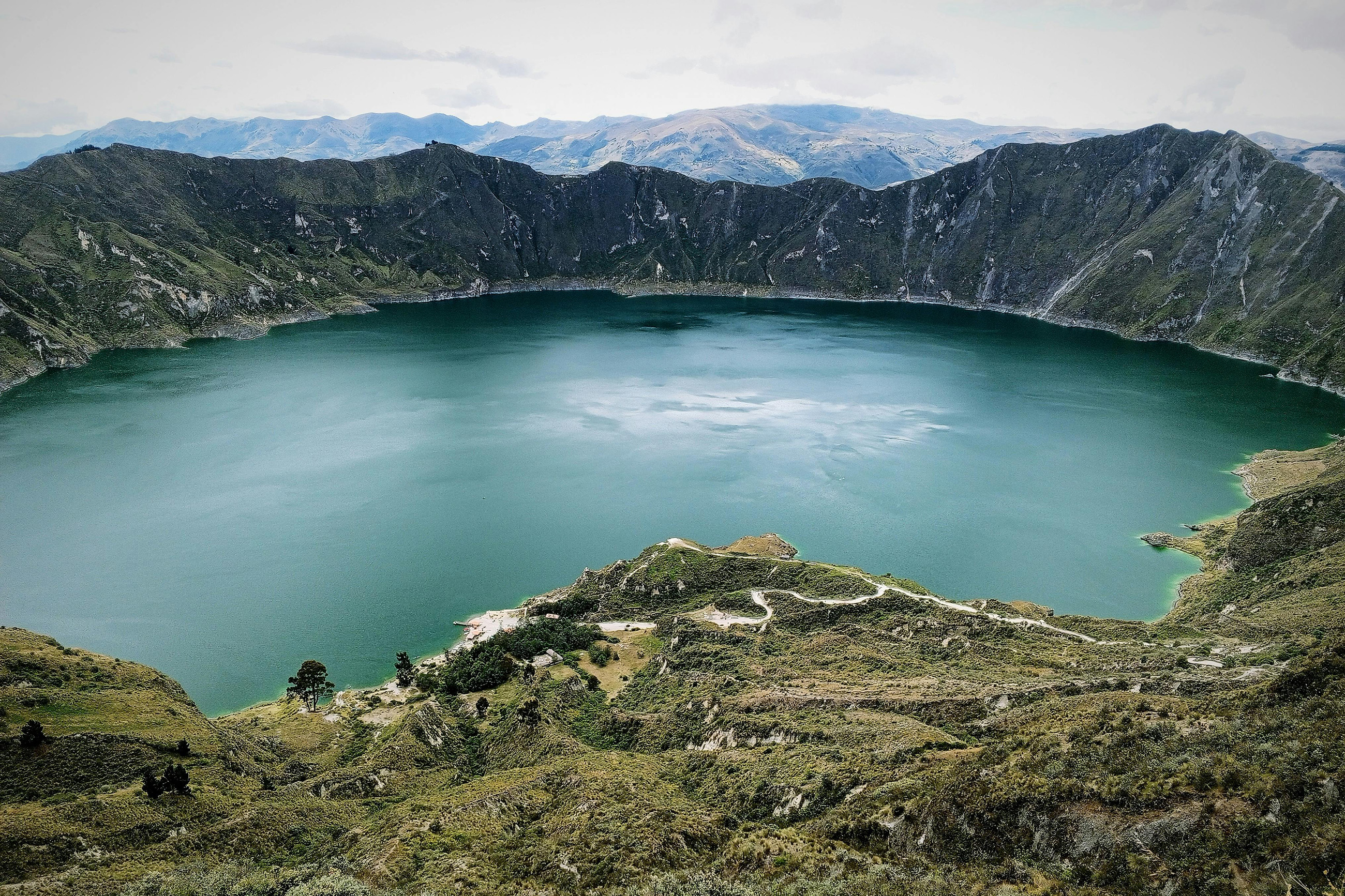
Around Quilotoa Crater Lake area the weather can be quite unpredictable you can expect chilly temperatures and strong winds.
2. Understanding the Cost of Living in Ecuador
Among the top benefits highlighted about living in Ecuador pros and cons is the country’s remarkably low cost of living.
Ecuador is considered one of the most affordable countries in Latin America, making it especially attractive for expats, retirees, and remote workers.
While your monthly expenses will depend on your lifestyle and the city or town you choose, many people find they can live comfortably in Ecuador on a budget of $1,200 to $1,500 USD per month.
To put it in perspective: basic groceries like bread, eggs, and milk often cost just $3 to $4 per day. Eating out at a local restaurant averages around $6 per meal, and public transportation is typically under $1 per ride. Renting a one-bedroom apartment in a city center is about $450 per month, with utilities like electricity and water adding another $35 to $45 monthly.
Costs do rise in larger cities such as Quito or Guayaquil, but even then, the overall affordability remains one of the most appealing factors when weighing living in Ecuador pros and cons. It’s a country where many expats enjoy a good quality of life without stretching their budget.

This chart will give you a glance at a typical monthly budget.
3. Do Foreigners Pay Income Tax in Ecuador?
As a foreigner living in Ecuador, you have certain tax obligations. Ecuador has a residence-based tax system which means the government taxes resident and foreign income earned outside the country. However, as a foreign resident, some significant deductions and thresholds make living in Ecuador tax friendly.
4. Is it easy to get residency in Ecuador?
One of the clear advantages that stands out when looking at living in Ecuador pros and cons is how easy it is to obtain residency. Ecuador is widely recognized as one of the easiest countries in Latin America to secure a long-term residency visa, thanks to its multiple visa options and relatively low financial requirements.
Upon arrival, most visitors automatically receive a 90-day stay with a T-3 tourist stamp in their passport. If you need more time to explore the country before committing, you can apply for a special tourist visa that grants an additional 180 days.
For those ready to settle down and fully embrace living in Ecuador, the next step is applying for a temporary resident visa, which can eventually lead to permanent residency. Ecuador’s visa policies do change from time to time, so it’s essential to stay up to date with the latest requirements.
Ecuador uses the term “temporary” to distinguish its long-term visas from permanent ones, but for many expats, this temporary status is the gateway to a long-term life in one of the most welcoming countries in Latin America.
| VISA TYPE | INFORMATION |
|---|---|
| Retirement/Rentista | There are two visa types, distinguished by income source: 1. Retirees must demonstrate a guaranteed minimum of $1,350 per month from a pension or Social Security. 2. Individuals with independent means can show the same income from any foreign investment. Each dependent requires an additional $250 per month. Visas are valid for two years and can only be renewed once. |
| Investor | You can obtain a long-term visa by investing at least $42,500 in real estate, a business, or a certificate of deposit in an Ecuadorian bank. This visa is valid for two years and can be renewed once. |
| Permanent Residency | After at least 21 months on a temporary visa—without being absent from Ecuador for more than 90 days per year—you can apply for permanent residency. To be approved, you must demonstrate self-sufficiency, a clean criminal record, health insurance, and basic knowledge of Ecuadorian culture, geography, and law. Once granted permanent residency, you cannot be absent from Ecuador for more than 180 days in the first two years, and thereafter, no more than five consecutive years. |
| Citizenship | Ecuador allows dual nationality without restriction. You can apply for citizenship by naturalization after three years of permanent residency, provided you demonstrate basic Spanish proficiency, knowledge of Ecuadorian culture, and social integration. |
5. Are Ecuadorian people friendly?
Ecuador is among the many ethnically diverse countries in Latin America. There is a great mix of cultures, with people from all over the world.
Whether in jungle river towns, coastal fishing villages, colonial cities, or remote cattle ranches, Ecuadorians are friendly and polite, making daily life a pleasure.
In addition, Ecuadorians tend to always be looking on the bright side. The family is extremely important and most leisure time is spent with them; families usually gather for meals or spend public holidays together.
Ecuadorians tend to communicate indirectly, favoring diplomacy and courtesy. They may view bluntness as rude but watch out for the non-verbal cues they can convey a lot.
Something that will stand out to you while considering living in Ecuador pros and cons is the importance of relationships and common courtesy within the local community. Don’t be surprised if someone commuting next to you says good morning, or if you see neighbors helping each other with groceries.
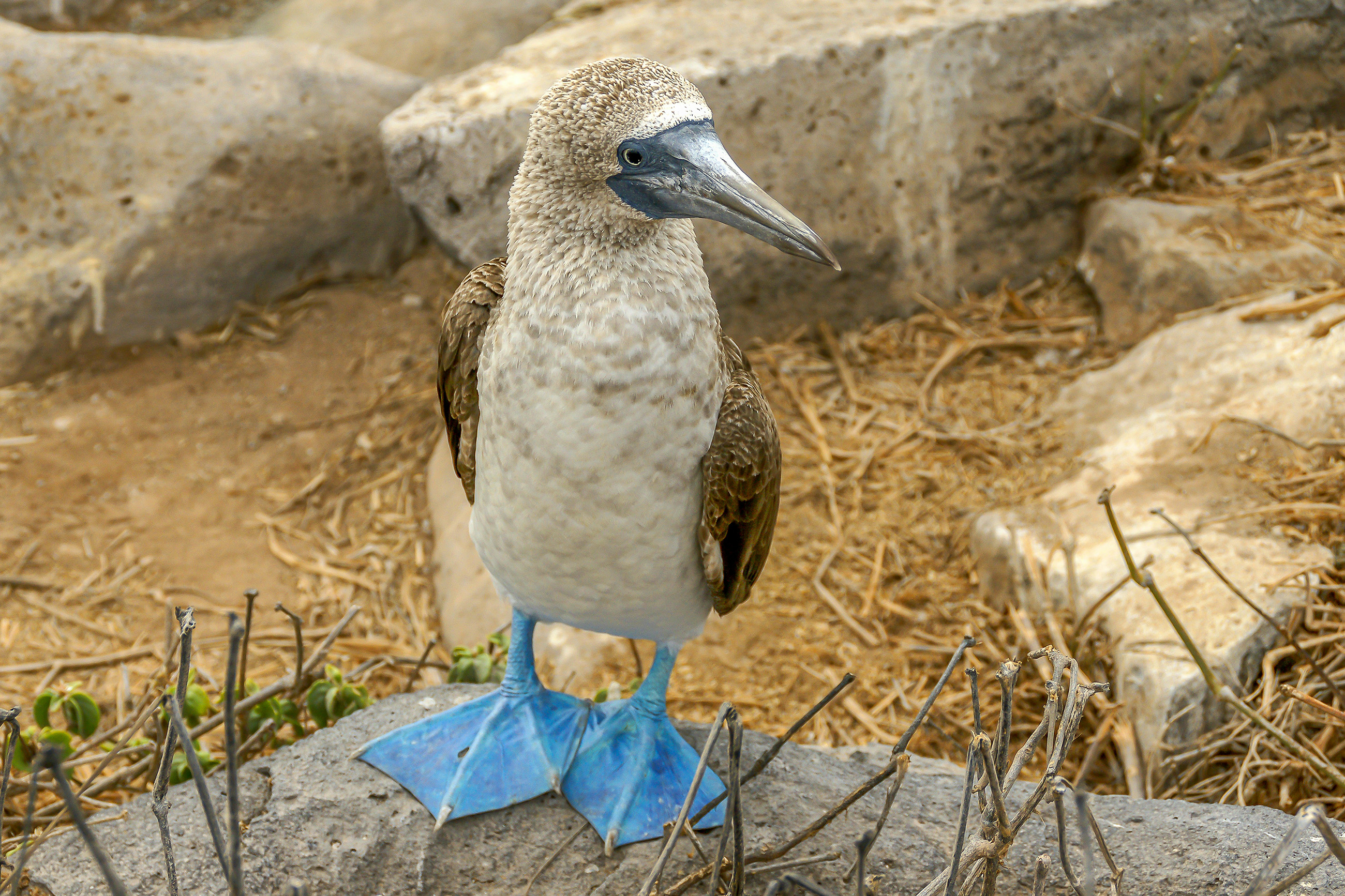
Ecuador’s diverse wildlife includes the blue-footed booby one of the unique species of the Galapagos Islands, Ecuador.
Thinking about making the move?

6. Does Ecuador have good healthcare?
Ecuador has a national healthcare system that is free and accessible to all citizens, regardless of income. The government funds most operations with supplementary coverage from private insurers.
Most major cities have one or more public hospitals which provide affordable healthcare. You will be seen by either a general practitioner or specialist depending on your ailment.
While living in Ecuador you’ll understand the healthcare is good for basic needs however, it does have room for improvement. Medical care can be quite cheap, especially when compared to the U.S.
For example, consultations with a general physician can cost around $40, and an extra $10 for a specialist doctor. If you have a more serious disease or a catastrophic illness like cancer it could be a problem if you don’t have private health insurance.
All Ecuadorians 65 years and younger are required to have health insurance, which costs an average of $70 monthly – significantly cheaper than the $1,200 that U.S citizens spend on similar coverage. Having private insurance will ensure you’re covered for any major health issues.
7. Is Ecuador safe to live?
With the recent gang violence breaking out there is a “Exercise Extreme Caution” advisory for Ecuador. Nowadays, it’s intricate to understand what is ‘safe’ when you reside in a foreign country. Risks that might affect locals won’t always harm foreigners and the opposite can be true as well.
Ecuador scores high, for crime. Although petty theft, homicide, and armed robbery are still prevalent, Ecuador’s history of violence is no longer indicative of the country. In recent decades, security has improved significantly.
With a Crime Rate index of 49.2, Ecuador is the sixth safest country in the twelve South American countries. However, you can still enjoy your life abroad in Ecuador if you know what precautions need to be taken.
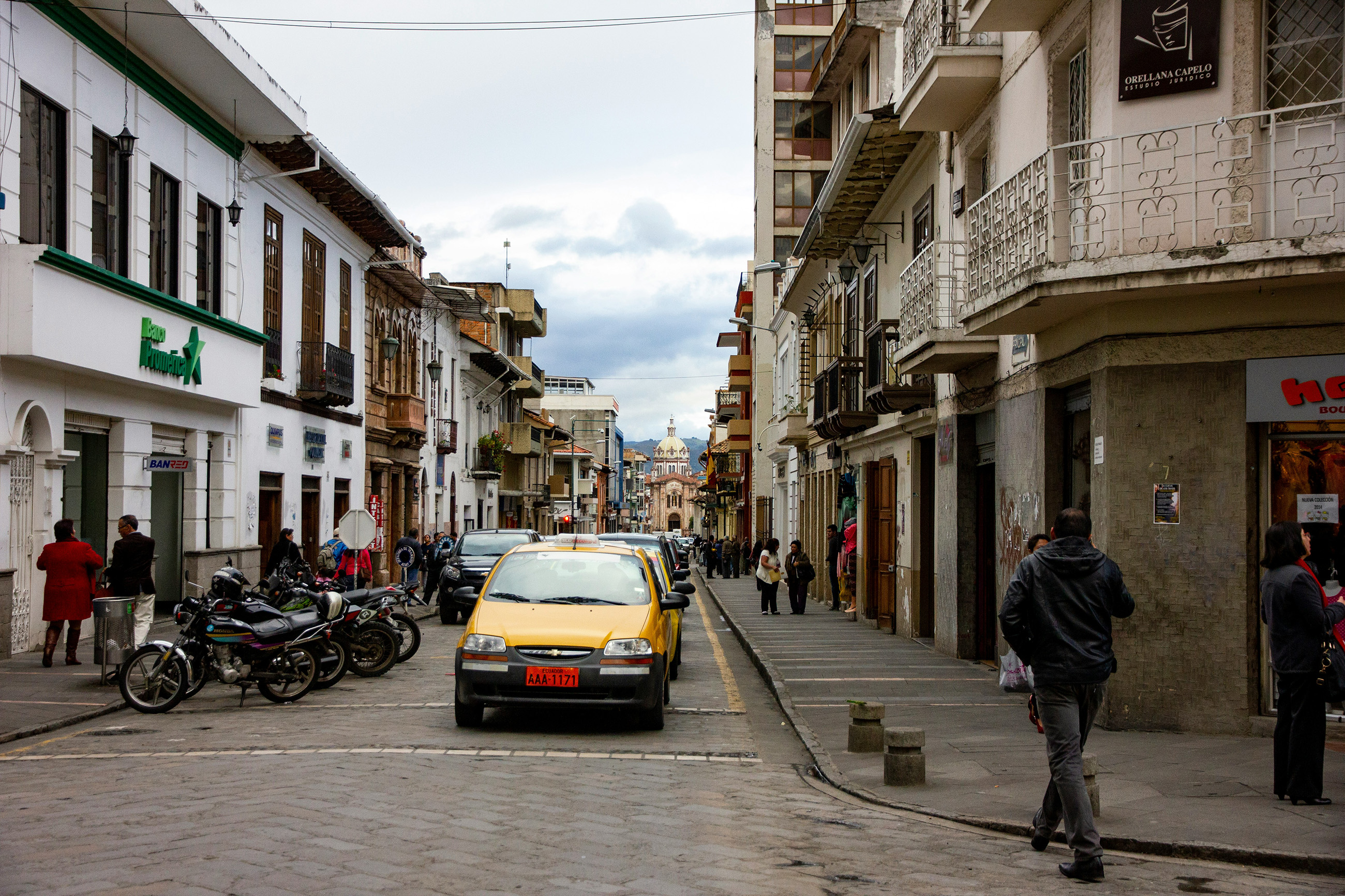
Ecuador’s small towns are charming, relaxed, and inviting.
8. Can I use U.S. dollars in Ecuador?
Yes, to help improve Ecuador’s economy, President Jamil Mahuad announced in 1999 that the country would adopt the U.S. dollar currency. Since adopting the new currency, Ecuadorian banks have recovered, and investors are now more interested in investing money in the country.
Even today Ecuador’s economy is largely cash-based, so you’ll need to have small denominations of cash on hand for all your purchases. You can use a credit card at some major establishments like restaurants, stores, hotels, etc., but not everywhere.
9. Exploring Ecuador’s Incredible Scenery
Ecuador is a land of incredible beauty, with towering mountains and lush forests, pristine beaches, and clear lagoons. The diversity of scenery is unmatched anywhere in the world.
From the snow-capped peaks of the Andes to the verdant rain forests of the Amazon, Ecuador has something for everyone.
The Galápagos Islands, with their unique wildlife and dramatic landscapes, are a must-see destination for any expat living in Ecuador. Wildlife enthusiasts will be in heaven here, as they can observe everything from giant tortoises and sea lions to penguins and sharks.
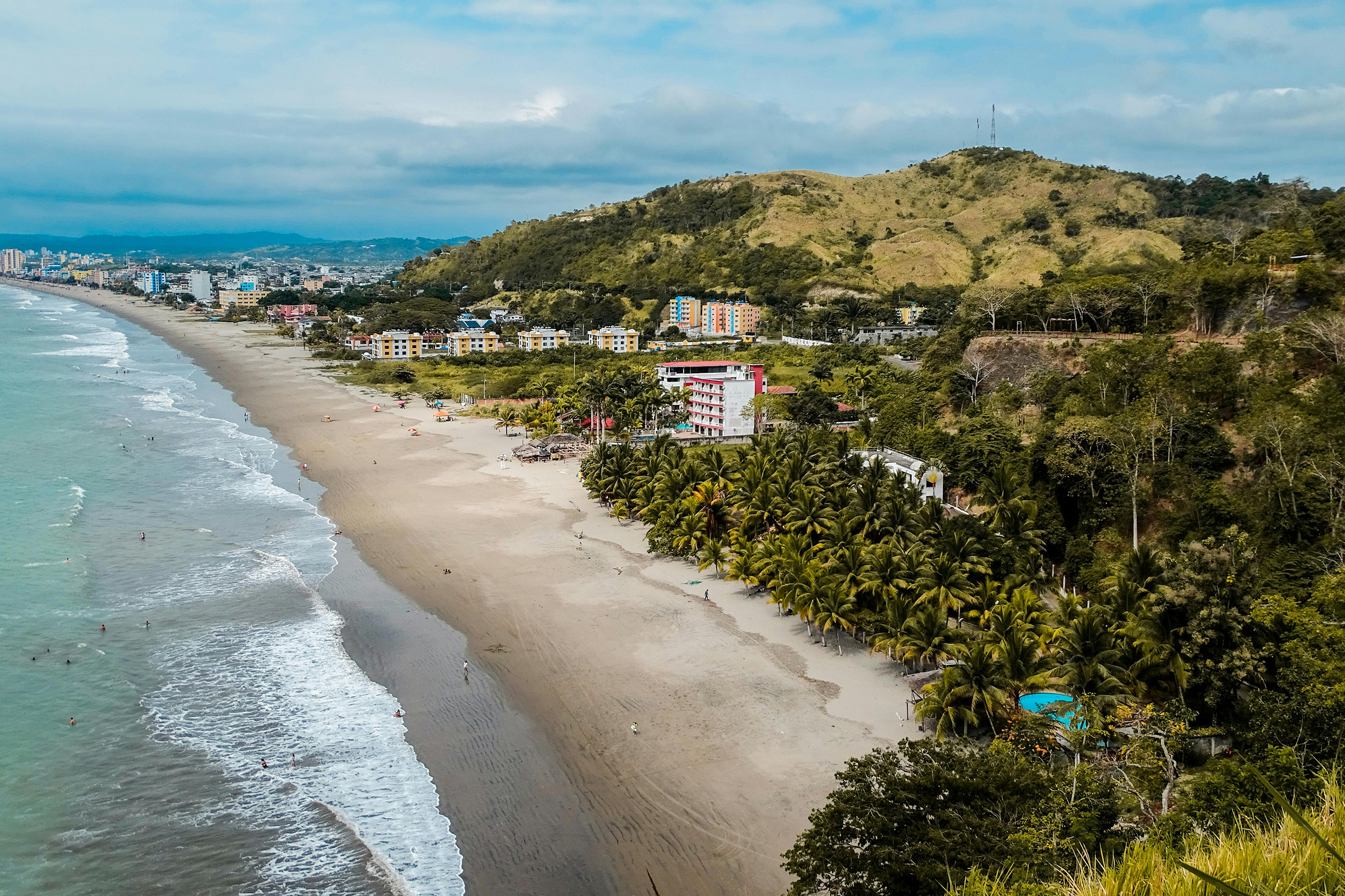
Canoa Beach is only one of the stunning beaches in Ecuador.
Living in Ecuador: 14 cons
If you’re reviewing living in Ecuador pros and cons you should be aware of the many disadvantages of living here. While there are certainly lots of benefits in this beautiful country, it’s easy to overlook that it is classified as a developing country, with several drawbacks that should be taken into account before deciding to live there.
This list will help you make the right decision for you and your family and your lifestyle. Keep reading to find out some of the cons of living in Ecuador.
1. Road Conditions in Ecuador Can Be Challenging
Ecuador is a land of extreme contrasts, from the arid coastal plains to the soaring peaks of the Andes. This diversity is mirrored in the country’s road network, which ranges from ancient mountain trails to modern expressways.
Overall, you’ll find when living in Ecuador the roadways are in poor condition and are a growing concern. The country’s roads are very narrow, so it’s hard to pass other cars, as well as being full of potholes, and many are in disrepair.
The paved roads become very slippery when it rains, and the shoulders are cracked and uneven. This can cause problems for motorists, as well as for pedestrians.
2. What is the most used transportation in Ecuador?
Because of the low cost, bus travel is the most popular transportation to get around the country.
However, in some cities, public transit is somewhat efficient and reliable, in other areas it can be quite spotty. In general, larger cities like Quito and Guayaquil have better public transit options than smaller towns and villages. But overall, the public transportation is lacking.
3. Can you drink the water in Ecuador?
The tap water in Ecuador is not safe to drink because it has not been purified. The poor sanitation can result in the spread of disease and contaminate food and water supplies. Instead, expats living in Ecuador stick to bottled or boiled water, or soft drinks.
4. Unreliable Power Supply in Some Areas
Blackouts can occur sporadically and without warning, lasting anywhere from a few minutes to a few days and are typically caused by a lack of generators and/or insufficient maintenance of the power grid.
While the government has made some progress in improving the reliability of the power supply, blackouts still happen relatively often, particularly in rural areas.
During a blackout, businesses may close early, and ATMs may not work. If you live in Ecuador, it’s helpful to have a backup power source on hand.

Handcrafted bamboo boxes for sale at a local market in Ecuador, showcasing the country’s rich artisan culture.
5. Street Dogs Can Be a Problem
Ecuador has a dog problem. It’s common to see starving dogs wandering the streets.
They usually travel in packs, scavenging for food wherever they can find it – even if that means going through people’s trash. Street dogs are more dangerous than in other countries because they’re often aggressive and could bite you if you get too close.
Planning your move to Latin America? Read this first—7 Relocation Mistakes to Avoid will save you from expensive headaches before you even pack a bag.
6. Mosquitoes and Climate Considerations
Although the rain in Ecuador creates bountiful vegetation, it has produced an influx of biting insects, specifically mosquitoes. And as a result, mosquito-borne diseases, such as malaria and dengue are frequently seen.
These outbreaks are commonly seasonal and mostly occur in highly populated areas near coastal lowlands. One of the challenges you may face while considering living in Ecuador pros and cons is getting bitten and falling ill. However, after some time you will develop immunity, and this won’t be such a problem.
7. Noise Levels in Ecuadorian Cities
Ecuador is like most Latin American countries, at any time of the day or night you’ll experience barking dogs, roosters, and loud music coming from all directions.
Gas trucks that spew pollution blasting their horns only add to the chaos. There’s music on the beach, people have loud parties, and there are lots of fireworks to deal with.
But it’s not just Ecuadorians having fun that causes the noise — there’s also construction, honking horns, and more. You can also hear announcements over loudspeakers, church bells, car alarms, anything you can think of.
8. Dealing with Bureaucracy and Corruption
Although the bureaucracy in Ecuador can be frustrating at times. One of the biggest challenges is that things move very slowly, so you need to be patient.
Another issue is that there can be a lot of paperwork involved in getting things done. If you’re prepared, the bureaucracy shouldn’t be too much of a problem.
However, there are ways to work around the problem, businesses and many expats hire consultants who know how to navigate the system. Not only do these consultants help with government services they can also bridge the language barrier gap and assist with opening bank accounts.
In addition, it’s common to “bribe” officials to speed up the process. While maneuvering within the bureaucracy can be a challenge, with patience and perseverance, it is possible to get things done.
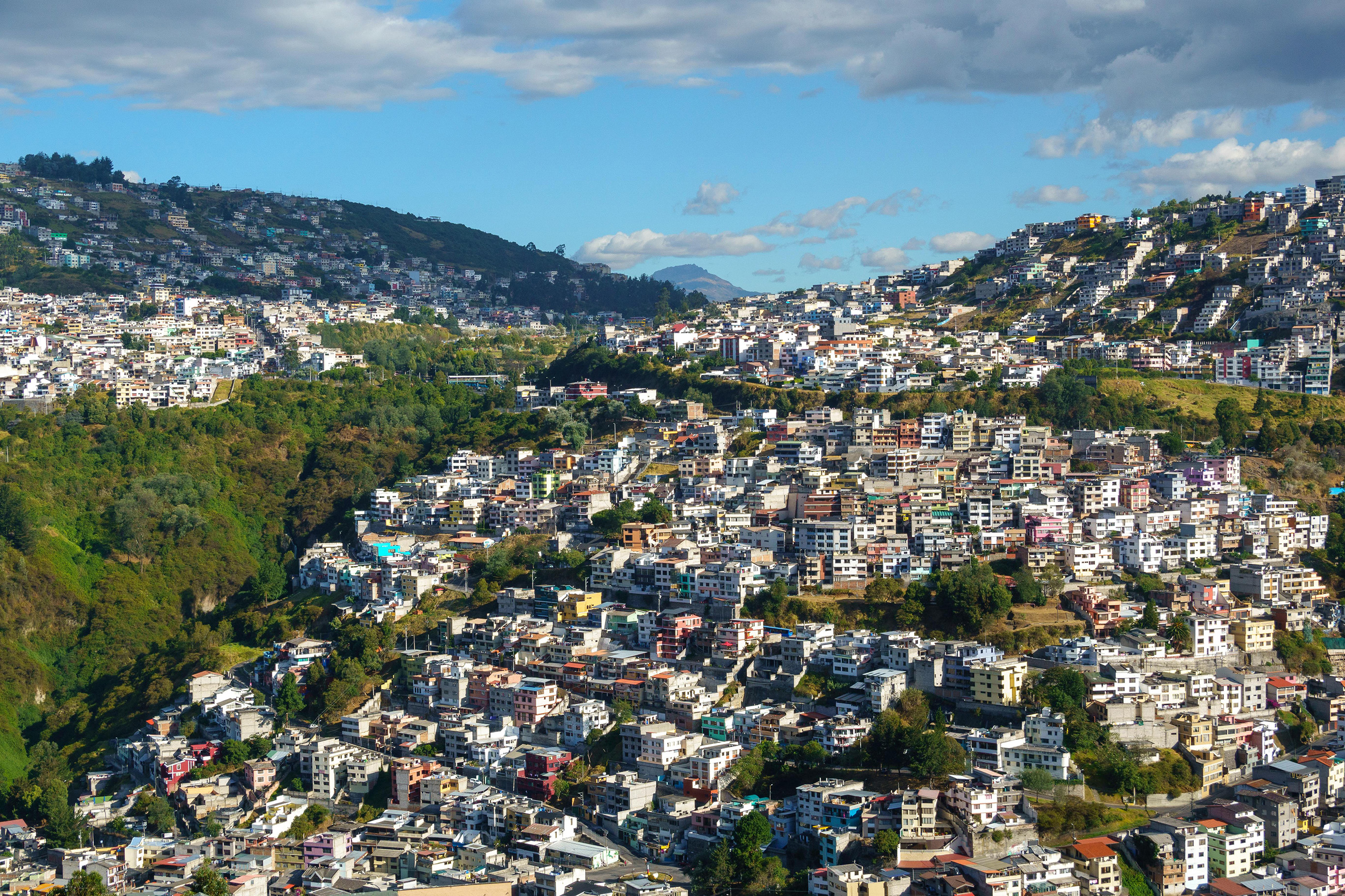
A significant portion of Quito’s impoverished population resides in these hillside neighborhoods.
9. Import Taxes and Additional Costs
The government of Ecuador tightly controls imports into the country to generate revenue. Import taxes are levied on all goods that are brought into the country.
The amount of the tax varies depending on the type of goods being imported. These taxes are typically around 10-15% and will be passed on to the consumer.
So, it can make certain foreign products expensive while living in Ecuador. Most expats use third-party delivery services from the United States or Europe to avoid paying heavy import taxes.
Your dream move starts before you step on the plane!
10. Building Standards Aren’t Always Strict
Building standards are a severe problem in Ecuador. Many buildings are constructed without following the proper safety guidelines, which can put people at risk in the event of an earthquake or other disaster.
Poorly constructed homes are prone to collapse during earthquakes.
Many people choose to do their electrical work without knowing all the best practices. Take care, some electric showers are known for making cracking, sparking, and popping sounds. In addition, many buildings lack adequate fire exits and sprinkler systems, making them a serious fire hazard.
If you are planning to rent or purchase a property in Ecuador, it’s important to have it inspected by a qualified engineer to ensure that it meets all the necessary safety standards.
11. What is the most common natural disaster in Ecuador?
Flooding is one of the most common natural disasters due to the El Niño phenomenon. As a result of the flooding landslides are extremely frequent and cause a hazard.
As well, Ecuador is situated in an area of intense seismic activity, with many fault lines making it highly prone to earthquakes, volcanic eruptions, and tsunamis.
You should make sure you are aware of the risks and are familiar with the relevant safety and evacuation procedures in case of any natural disasters.
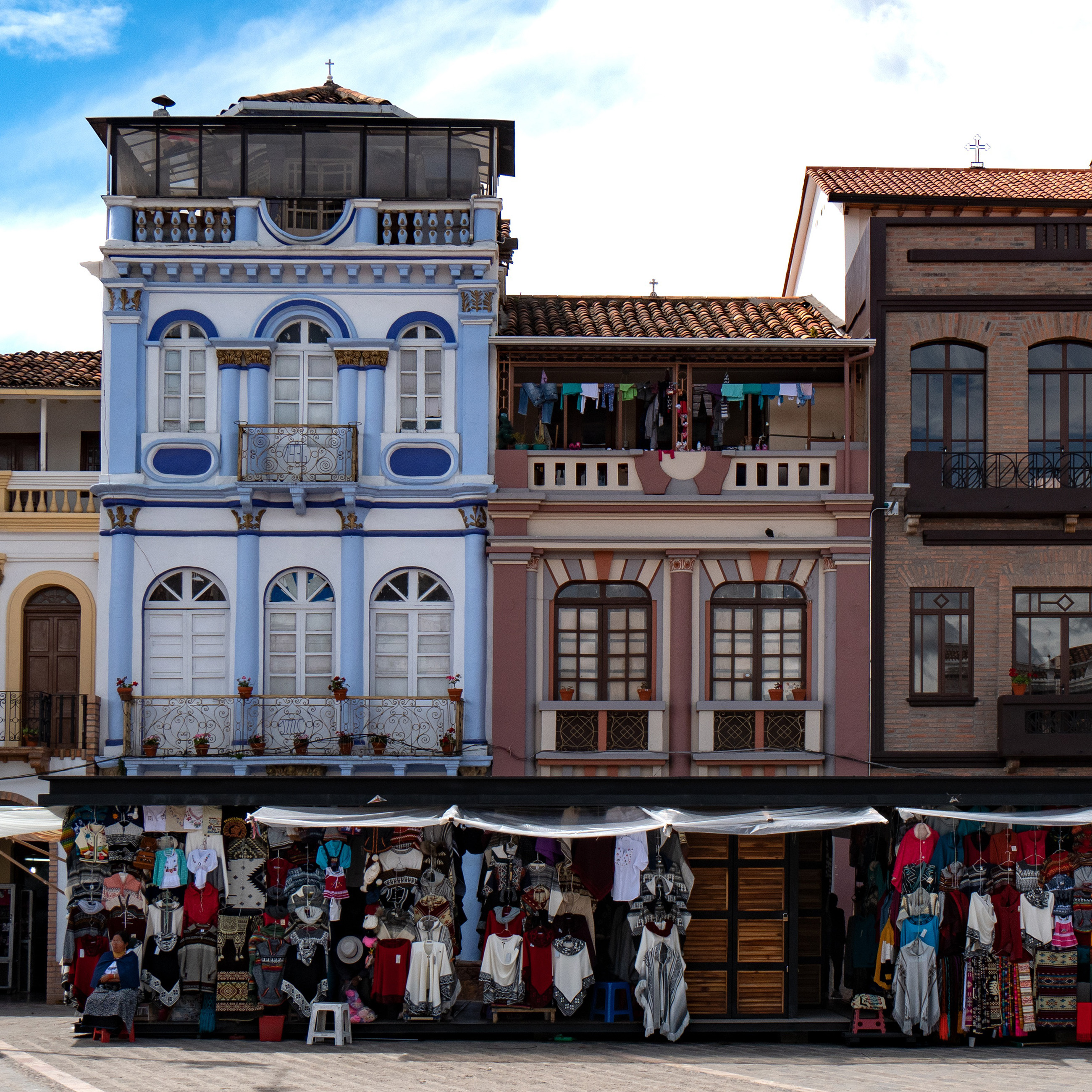
Well-preserved Ecuadorian city streets are lined with traditional wares and tourist souvenirs.
12. Strong Sun and UV Exposure
The fact that Ecuador is on the equator means that the sun strikes the earth at a very direct angle, making heat much more intense and you can burn faster.
Depending on where in Ecuador you decide to live you could have up to 12 hours of direct sunlight pouring down on you every day, all year long.
And if you plan on spending more than 10 minutes under those blazing rays, be sure to have ample amounts of sunscreen and wear a hat for protection.
13. Hygiene and Sanitation Considerations
If you want to avoid germs, Ecuador is not the place for you.
You can’t be afraid of some dirty open-air markets and public transportation will expose you to large groups of people.
Depending on where you’re living, the pollution typically leaves behind a layer of dust that seems to descend onto everything.
You can also be overwhelmed by those not-so-nice smells in the streets.
14. What is the national language of Ecuador?
Struggling with language comprehension is common for ex-pats. If you didn’t take Spanish classes in high school or college, it can be tough to start trying to learn a new language later in life.
Even though Ecuador has many places where foreign nationals live together and support each other, it can still be difficult to manage everyday life.
Other Lifestyle Challenges to Consider
If you’re seriously thinking about relocating, Ecuador should definitely be at the top of your list!
When weighing the Ecuador pros and cons, you’ll find that many communities offer a welcoming atmosphere and a low cost of living, making the benefits of living here far outweigh the drawbacks.
Of course, everyone’s situation is unique—what might feel like a con for one person could be a non-issue for someone else. That’s why it’s important to carefully consider the full picture of living in Ecuador pros and cons before making your move.
Two common challenges that often come up in conversations about living in Ecuador pros and cons are visa processing times and health insurance options. These are factors you’ll want to research thoroughly.
Ultimately, if you’re considering living in Ecuador, comparing the pros and cons honestly will help you decide whether this vibrant South American country is the right fit for you and your family’s future.
Moving abroad should be exciting!
Grab your free guide — 7 Mistakes to Avoid Before Moving to Latin America (or Abroad). Learn how to dodge mistakes before you make them!

